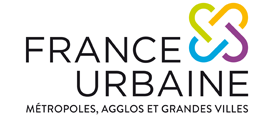Diagnosis and qualification of the levers and performance factors of territorial ecosystems
Lionel DELBOS, April 2022
In response to the issues and problems mentioned above, and in order to actively contribute to the defence and support of project territories, RETIS and France Urbaine have joined forces to provide all the players involved with the keys to understanding and a shared vision of the functioning of territorial innovation ecosystems and their performance and success factors. This analysis corresponds to the editorial of the study conducted by RETIS and France urbaine.
To download : etude-panorama-des-ecosystemes-territoriaux-dinnovation-retis-france-urbaine_vok_bd.pdf (8.3 MiB)

Innovation remains a protean and dynamic concept, but in all its forms it is the fruit of a meeting between entrepreneurs, project leaders and creators, all working towards a project, an objective, a problem to be solved, an object or a service to be improved.
But this meeting doesn’t take place in a vacuum, it takes place in a particular area, a place that, through its history and culture and thanks to the actions of public and private players, creates the conditions for the emergence, acceleration and orientation of innovation towards the market or uses. This alchemy is based as much on experience, networks and individual qualities (researchers, academics, designers, entrepreneurs in the broadest sense of the term, etc.) as on a desire to respond to the challenges of life in society, health, progress and the creation of value(s).
This meeting gives rise to a dynamic, creating new interactions and leading to trials, prototypes and experiments. This network of contacts, exchanges, locations and projects gradually makes up one or more ecosystems, often in varying geometries.
Innovation ecosystems are therefore all different, and yet they are linked together by certain constants that we felt it necessary to identify, starting from the field and the experience of the players involved, by describing and deciphering thirteen French ecosystems.
Together with the partners in this study, we wanted to test, validate or invalidate a number of convictions, and offer our respective members ideas and guidelines to help them through the changes and transformations in these ecosystems. We wanted to share with you some of what we have learned and some of the questions that emerge from reading these regional case studies. The 2000s provided a wealth of tools for supporting and structuring the components of innovation ecosystems in and with local areas : clusters, competitiveness clusters, technology parks, Carnot institutes, SATT, etc.
The major public research bodies have restructured, and universities and grandes écoles have strengthened their presence in research and innovation. As part of the process of decentralisation, these systems and networks have made it easier for local authorities to become involved in the interplay of players and projects.
Foremost among these are the regions and inter-municipal authorities, each of which in its own way has gradually acquired the skills and human and financial resources to become a major partner in these ecosystems : support for the operation of structures, support for the emergence and consolidation of sectors, deployment of real estate tools to facilitate project incubation, increased involvement in funds dedicated to innovative companies, etc.
At the same time, however, the State and, increasingly, Europe, have been reshaping a landscape that sometimes supports these local ecosystems, but which remains centrally structured overall : the Programme Innovation d’Avenir (PIA), in its four variations, and, more recently, France Relance and even France 2030, have reinstated top-down approaches to innovation support.
The proliferation of calls for projects, an illustration of this return to innovation designed to « grow » in the regions, has accompanied this change by making innovation an object of competition between players ; these opposing forces are disrupting ecosystems, pushing them to be agile and constantly adaptable, constantly positioning local innovation players between the living forces of the regions and regional, national and European guidelines and funding, at the risk of making them lose their centre of gravity and the meaning of their mission.
Today, in the face of these horizontal and vertical forces, our study shows that the diversity of the areas studied (from Lille to Marseille, via Brest or Nancy) is matched by a wide variety of innovation ecosystems : the economic and particularly industrial history, the role of the university or public research centres, the commitment of public players or major local companies are all variables that produce highly varied networks and leaderships. EDITORIAL There are a number of constants : a good fit with the local living environment, the knock-on effect of higher education and research players, the imprint of committed entrepreneurs, the continuity of local public action or the experience of a « collective game »…
But these constants do not make a model; the logic of differentiation consolidates the diversity of innovation ecosystems and communities, and the collective commitment of partners remains the fundamental parameter and the key factor for success. The urban area, which often corresponds to an employment and living area, remains the most relevant scale for ensuring leadership and governance on a human scale. Although each innovation player operates at several territorial levels, they are best placed and resourced in metropolitan-scale networks.
In this respect, medium-sized cities and conurbations often play a winning card : links between people and organisations are facilitated by proximity and by more agile local authorities, in daily contact with the grassroots. These agile regions, when they know how to differentiate themselves and make strong choices, are major assets for their regions and for the country as a whole.
It remains for the regions, via the SRDEII in particular, and the State, via the PIA and France 2030, to take account of these specific features and to rely on the EPCIs as interfaces and relays for local innovation strategies.
Finally, innovation ecosystems often overlap several scales of action, and inter-territoriality plays an important role, but one that can be strengthened ; metropolises and conurbations are also expected to be able to forge links with innovation players outside their immediate institutional perimeter ; in this area too, the « alliance of territories » has its full meaning.
Let’s not get bogged down in our institutional perimeters or in the catalogue of our skills !

